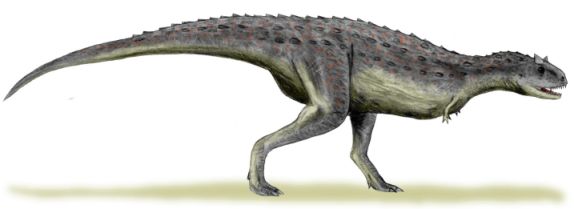Carnotaurus: Tiny Arms, Big Tail, Super Fast!
Carnotaurus (which literally means "meat eating bull") was a seven metre long prehistoric predator, which terrorised smaller plant eating dinosaurs in the southern hemisphere (where Argentina is now) in the late Cretaceous period, around 75 million years ago. But now new research from scientists from the University of Alberta, published today in PLOS One, suggest this terrifying beast was actually more deadly than initially thought.
Fossil evidence might suggest Carnotaurus was a wimpy-armed meat-eating dinosaur but this new study reveals the creature's enormous and powerful tail muscle said made it a "speedster" and one of the fastest running hunters of its time.
Scott Persons, the lead researcher, started his study by dissecting modern lizards and crocodiles and seeing how the tail related to leg movement. A close examination of the tail bones of Carnotaurus showed its caudofemoralis muscle had a tendon that attached to its upper leg bones. Flexing this muscle pulled the legs backwards and gave Carnotaurus more power and speed in every step.
Earlier research, also carried out by Persons, found a similar tail-muscle and leg-power combination in the iconic predator Tyrannosaurus rex. Many scientists assumed T. rex's huge tail might have simply served as a counterweight to its huge, heavy head.
Persons' examination of the tail of Carnotaurus showed that along its length were pairs of tall rib-like bones that interlocked with the next pair in line. Using 3-D computer models, Persons recreated the tail muscles of Carnotaurus. He found that the unusual tail ribs supported a huge caudofemoralis muscle. The interlocked bone structure along the dinosaur's tail did present one drawback: the tail was rigid, making it difficult for the hunter to make quick, fluid turns. Persons says that what Carnotaurus gave up in maneuverability, it made up for in straight ahead speed. For its size, Carnotaurus had the largest caudofemoralis muscle of any known animal, living or extinct.
Want to learn more? Ed Yong has an excellent detailed piece on the Carnotaurus tail.
Want to learn more? Ed Yong has an excellent detailed piece on the Carnotaurus tail.

